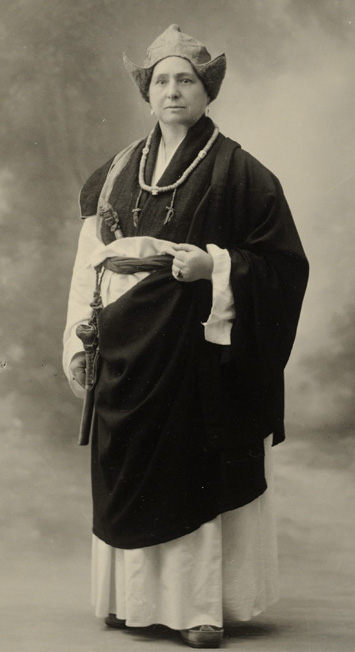Kangling on:
[Wikipedia]
[Google]
[Amazon]
 ''Kangling'' (), literally translated as "leg" (''kang'') "flute" (''ling''), is the
''Kangling'' (), literally translated as "leg" (''kang'') "flute" (''ling''), is the  A minor figure from
A minor figure from
 ''Kangling'' (), literally translated as "leg" (''kang'') "flute" (''ling''), is the
''Kangling'' (), literally translated as "leg" (''kang'') "flute" (''ling''), is the Tibetan
Tibetan may mean:
* of, from, or related to Tibet
* Tibetan people, an ethnic group
* Tibetan language:
** Classical Tibetan, the classical language used also as a contemporary written standard
** Standard Tibetan, the most widely used spoken diale ...
name for a trumpet
The trumpet is a brass instrument commonly used in classical and jazz ensembles. The trumpet group ranges from the piccolo trumpet—with the highest register in the brass family—to the bass trumpet, pitched one octave below the standard ...
or horn made out of a human tibia
The tibia (; ), also known as the shinbone or shankbone, is the larger, stronger, and anterior (frontal) of the two bones in the leg below the knee in vertebrates (the other being the fibula, behind and to the outside of the tibia); it conn ...
or femur
The femur (; ), or thigh bone, is the proximal bone of the hindlimb in tetrapod vertebrates. The head of the femur articulates with the acetabulum in the pelvic bone forming the hip joint, while the distal part of the femur articulates ...
, used in Tibetan Buddhism
Tibetan Buddhism (also referred to as Indo-Tibetan Buddhism, Lamaism, Lamaistic Buddhism, Himalayan Buddhism, and Northern Buddhism) is the form of Buddhism practiced in Tibet and Bhutan, where it is the dominant religion. It is also in majo ...
for various chöd
Chöd ( lit. 'to sever') is a spiritual practice found primarily in the Yundrung Bön tradition as well as in the Nyingma and Kagyu schools of Tibetan Buddhism (where it is classed as Anuttarayoga Tantra). Also known as "cutting through the ego, ...
rituals as well as funerals performed by a chöpa. The leg bone of a criminal or a person who died a violent death is preferred. Alternatively, the leg bone of a respected teacher may be used. The kangling may also be made out of wood.
The kangling should only be used in chöd rituals performed outdoors with the chöd damaru and bell. In Tantric chöd
Chöd ( lit. 'to sever') is a spiritual practice found primarily in the Yundrung Bön tradition as well as in the Nyingma and Kagyu schools of Tibetan Buddhism (where it is classed as Anuttarayoga Tantra). Also known as "cutting through the ego, ...
practice, the practitioner, motivated by compassion
Compassion motivates people to go out of their way to relieve the physical, mental or emotional pains of others and themselves. Compassion is often regarded as being sensitive to the emotional aspects of the suffering of others. When based on n ...
, plays the kangling as a gesture of fearlessness, to summon hungry spirits and demons so that she or he may satisfy their hunger and thereby relieve their sufferings. It is also played as a way of "cutting off of the ego."
 A minor figure from
A minor figure from Katok Monastery
Katok Monastery (, THL ''Katok Dorjé Den''), also transliterated as Kathok or Kathog Monastery, was founded in 1159 and is one of the "Six Mother Monasteries" in Tibet of the Nyingma school of Tibetan Buddhism, built after Samye Monastery. It ...
, the First Chonyi Gyatso, Chopa Lugu (17th – mid-18th century), is remembered for his "nightly bellowing of bone-trumpet angling
Angling is a fishing technique that uses a fish hook or "angle" (from Old English ''angol'') attached to a fishing line to tether individual fish in the mouth. The fishing line is usually manipulated via a fishing rod, although rodless techni ...
and shouting of phet" on pilgrimage, much to the irritation of the business traveler who accompanied him. Chopa Lugu became renowned as "The Chod Yogi Who Split a Cliff in China (rgya nag brag bcad gcod pa)."
See also
*Gyaling
The ''gyaling'' (, English: also spelled , , , , , , etc.) Gyaling, literally meaning "Chinese flute", is a traditional woodwind instrument used in Tibet. As its name indicates, it is the Chinese double reed Suona horn (much like the sorna) used ...
References
Natural horns and trumpets Tibetan Buddhist ritual implements Tibetan musical instruments Femur Tibia Trumpets of Nepal {{Brass-instrument-stub